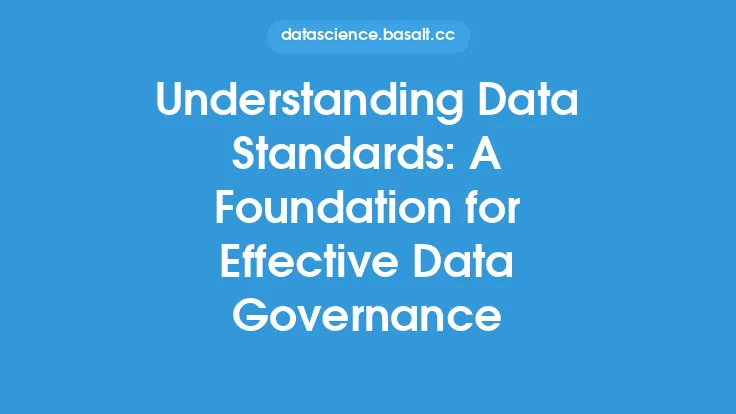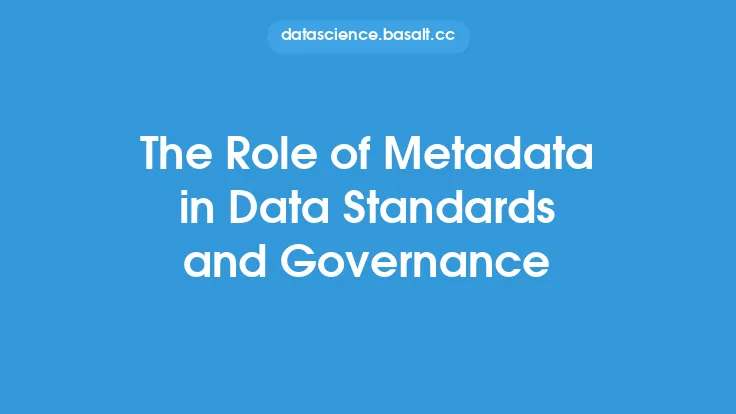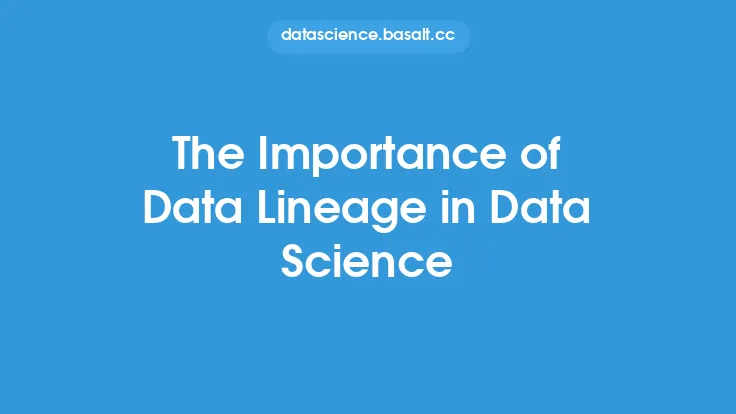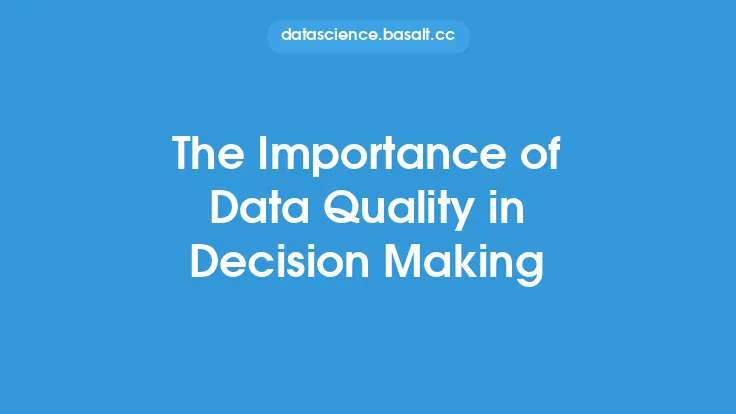In today's data-driven world, organizations are generating and collecting vast amounts of data from various sources. This data is used to inform business decisions, improve operations, and drive innovation. However, with the increasing volume and complexity of data, it has become challenging for organizations to manage and govern their data effectively. This is where data lineage comes into play, providing a foundation for effective data governance by enabling organizations to track the origin, movement, and transformation of their data.
What is Data Lineage?
Data lineage refers to the process of tracking and documenting the data flow from its origin to its final destination, including all the transformations, processing, and storage that occur along the way. It provides a complete and accurate record of the data's history, including where it came from, how it was processed, and who accessed it. Data lineage is essential for ensuring data quality, integrity, and reliability, as it allows organizations to identify and address any issues or discrepancies in the data.
Benefits of Data Lineage
The benefits of data lineage are numerous and significant. By implementing data lineage, organizations can improve data transparency, accountability, and trust. It enables them to track data ownership, understand data provenance, and identify potential security risks. Data lineage also facilitates compliance with regulatory requirements, such as GDPR and HIPAA, by providing a clear audit trail of data processing and storage. Additionally, data lineage helps organizations to optimize their data management processes, reduce data redundancy, and improve data quality.
Data Lineage Components
Data lineage consists of several key components, including data sources, data processing, data storage, and data consumption. Data sources refer to the origin of the data, such as databases, files, or external data providers. Data processing includes all the transformations, aggregations, and calculations that are performed on the data. Data storage refers to the various repositories and systems where the data is stored, such as data warehouses, data lakes, or cloud storage. Data consumption refers to the various ways in which the data is used, such as reporting, analytics, or machine learning.
Data Lineage Techniques
There are several techniques used to implement data lineage, including data mapping, data tracing, and data cataloging. Data mapping involves creating a visual representation of the data flow, including all the sources, processing, and storage. Data tracing involves tracking the data as it moves through the system, using techniques such as logging and auditing. Data cataloging involves creating a centralized repository of metadata that describes the data, including its origin, structure, and usage.
Data Lineage Tools and Technologies
There are several tools and technologies available to support data lineage, including data integration platforms, data governance tools, and data cataloging software. Data integration platforms, such as ETL (Extract, Transform, Load) tools, provide a way to track and manage data as it moves between systems. Data governance tools, such as data quality and data security tools, provide a way to monitor and control data access and usage. Data cataloging software, such as metadata management tools, provide a way to create and manage a centralized repository of metadata.
Implementing Data Lineage
Implementing data lineage requires a structured approach, including planning, design, implementation, and maintenance. The first step is to identify the data sources and systems that need to be tracked, and to determine the level of granularity required. The next step is to design the data lineage system, including the data mapping, data tracing, and data cataloging components. The implementation phase involves deploying the data lineage tools and technologies, and configuring them to track and manage the data. The final phase involves maintaining the data lineage system, including updating the metadata, monitoring data quality, and addressing any issues or discrepancies.
Challenges and Limitations
While data lineage provides numerous benefits, there are also several challenges and limitations to consider. One of the main challenges is the complexity of the data landscape, including the variety of data sources, systems, and formats. Another challenge is the volume and velocity of the data, which can make it difficult to track and manage. Additionally, data lineage requires significant resources and investment, including personnel, technology, and infrastructure. Finally, data lineage is not a one-time effort, but rather an ongoing process that requires continuous monitoring and maintenance.
Best Practices
To get the most out of data lineage, there are several best practices to follow. First, it's essential to establish a clear data governance framework, including policies, procedures, and standards. Next, it's necessary to identify and prioritize the most critical data assets, and to focus on tracking and managing those first. It's also important to use automated tools and technologies to streamline the data lineage process, and to provide real-time visibility and monitoring. Finally, it's crucial to continuously monitor and maintain the data lineage system, including updating the metadata, addressing issues, and improving data quality.
Future of Data Lineage
The future of data lineage is closely tied to the evolving data landscape, including the increasing use of cloud, artificial intelligence, and machine learning. As data becomes more distributed, diverse, and dynamic, the need for data lineage will only continue to grow. Additionally, emerging technologies such as blockchain and IoT will require new and innovative approaches to data lineage. To stay ahead of the curve, organizations must invest in data lineage, and prioritize it as a critical component of their overall data strategy. By doing so, they can unlock the full potential of their data, and drive business success in a rapidly changing world.





